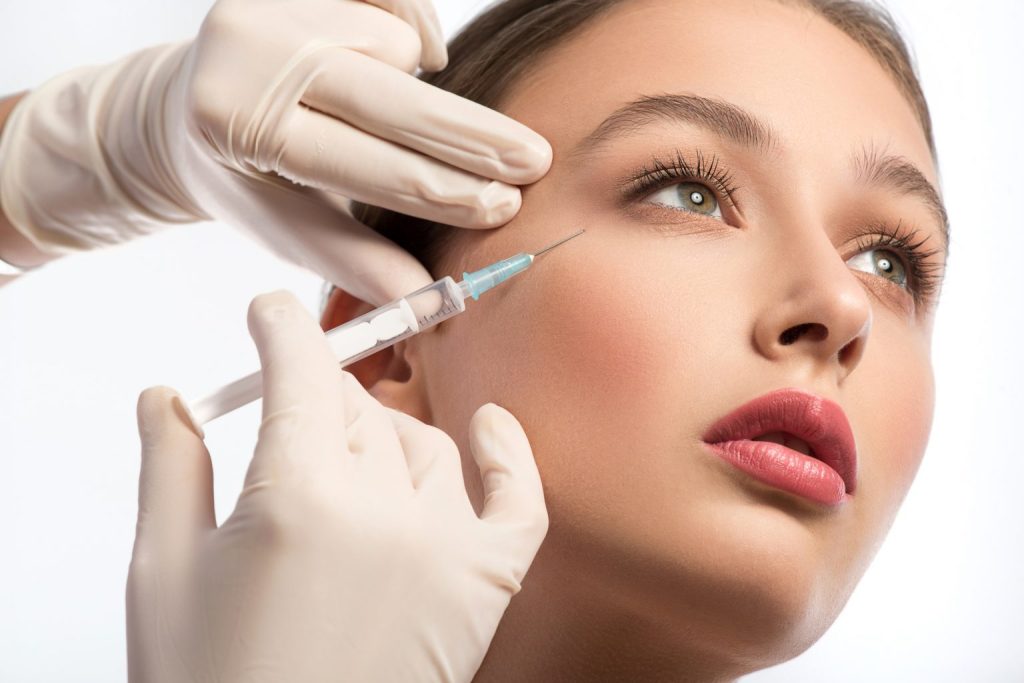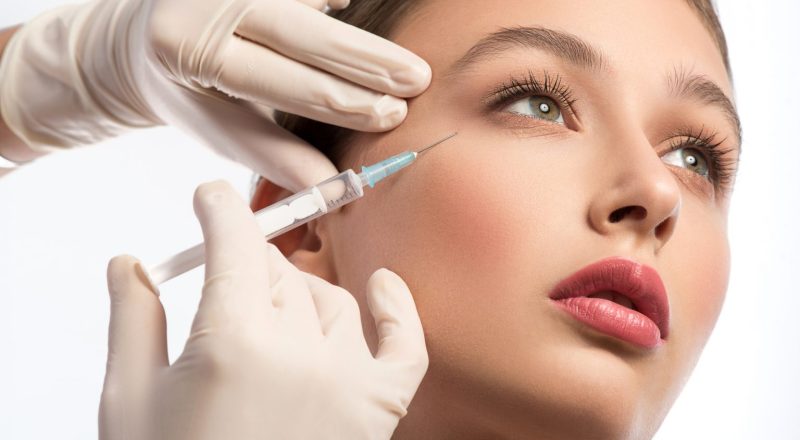Introduction
In the quest for eternal youth and beauty, many people turn to cosmetic procedures to maintain a youthful appearance. Two of the most popular choices are Botox and dermal fillers. These non-surgical treatments offer quick results and minimal downtime, making them attractive choices for those looking to enhance their facial features. However, understanding the differences between Botox and fillers is crucial in making the right choice for your unique needs.
Botox: The Wrinkle Relaxer
What is Botox?
Botulinum Toxin also called Botox is a neurotoxin produced by the bacterium called Clostridium botulinum. It has found a wide range of medical and cosmetic applications, with its cosmetic use being particularly popular. It is mainly used to treat dynamic wrinkles – those formed by muscle movements, such as crow’s feet, forehead lines, and frown lines.
How Does Botox Work?
Botox paralyzes the muscles responsible for causing wrinkles temporarily. When injected into specific facial muscles, it inhibits their ability to contract, leading to a smoother and more relaxed appearance. The results typically last for three to six months, after which the effects gradually wear off.
Pros of Botox:
- Effective for dynamic wrinkles: Botox is highly effective at reducing the appearance of wrinkles caused by muscle movement, making it an excellent choice for lines around the eyes and forehead.
- Quick procedure: Botox injections are relatively quick, often taking less than 15 minutes, making it a convenient option for those with busy schedules.
- Minimal downtime: Most people can resume their daily activities immediately after Botox treatment, with minimal side effects like mild swelling or bruising.
- Gradual return to natural appearance: As Botox gradually wears off, there is no sudden change in your appearance, allowing for a more natural transition.
Cons of Botox:
- Temporary results: Botox results are not permanent, so you’ll need regular injections to maintain your desired look.
- Limited to dynamic wrinkles: Botox is not effective for treating static wrinkles (wrinkles that are present even when your face is at rest) or adding volume to the face.
Dermal Fillers: The Volume Enhancer
What are Dermal Fillers?
Dermal fillers are injectable substances, most commonly hyaluronic acid, that are used to add volume, contour, and plump the skin. They are versatile and can address a variety of concerns, including smoothing wrinkles, enhancing lips, and restoring facial volume.
How Do Dermal Fillers Work?
Dermal fillers work by filling in the space beneath the skin where volume has been lost due to aging or other factors. They can also stimulate collagen production, further improving skin texture and elasticity. The effects of dermal fillers can last anywhere from six months to two years, depending on the type of filler used and the area treated.
Pros of Dermal Fillers:
- Versatility: Dermal fillers are used to address a wide range of concerns, from adding volume to reducing the appearance of wrinkles and fine lines.
- Longer-lasting results: While not permanent, dermal filler results tend to last longer than Botox, reducing the frequency of maintenance treatments.
- Immediate results: The effects of dermal fillers are visible immediately after the procedure, allowing you to see the changes right away.
- Natural-looking results: Skilled practitioners can achieve subtle, natural-looking results with dermal fillers, enhancing your facial features without an overly “done” appearance.
Cons of Dermal Fillers:
- Possible side effects: Like any medical procedure, dermal fillers carry the risk of side effects such as swelling, bruising, and infection.
- Requires skillful administration: To achieve the best results, it’s crucial to choose a qualified and experienced practitioner for dermal filler injections.
- Cost: Dermal fillers can be more expensive than Botox, particularly if multiple syringes are needed for extensive volume restoration.
Choosing Between Botox and Dermal Fillers

The choice between Botox and dermal fillers largely depends on your specific concerns and aesthetic goals. Here are some considerations to help you decide:
- Type of Wrinkles: If your primary concern is dynamic wrinkles caused by muscle movement, Botox may be the better choice. For static wrinkles and volume loss, dermal fillers are more suitable.
- Duration of Results: If you prefer longer-lasting results and fewer maintenance appointments, dermal fillers may be a better fit.
- Immediate vs. Gradual Results: Dermal fillers provide immediate results, while Botox takes a few days to show its full effect. Consider your timeline and how soon you want to see changes.
- Budget: Dermal fillers can be costlier than Botox, so consider your budget when making a decision.
- Combination Approach: Some individuals opt for a combination of Botox and dermal fillers to address multiple concerns simultaneously.
- Consultation with a Professional: Always consult with an experienced dermatologist who can assess your individual needs and recommend the most suitable treatment plan.
Conclusion
In the battle of Botox vs. dermal fillers, there is no one-size-fits-all answer. Both treatments have their unique benefits and can deliver remarkable results when administered by skilled professionals. Ultimately, the choice between Botox and dermal fillers depends on your specific concerns and aesthetic goals. Consulting with a reputable practitioner is the first step in determining the right treatment for your face, ensuring that you achieve the youthful and refreshed appearance you desire. Remember, the key to successful cosmetic enhancement is enhancing your natural beauty, not erasing it entirely.
